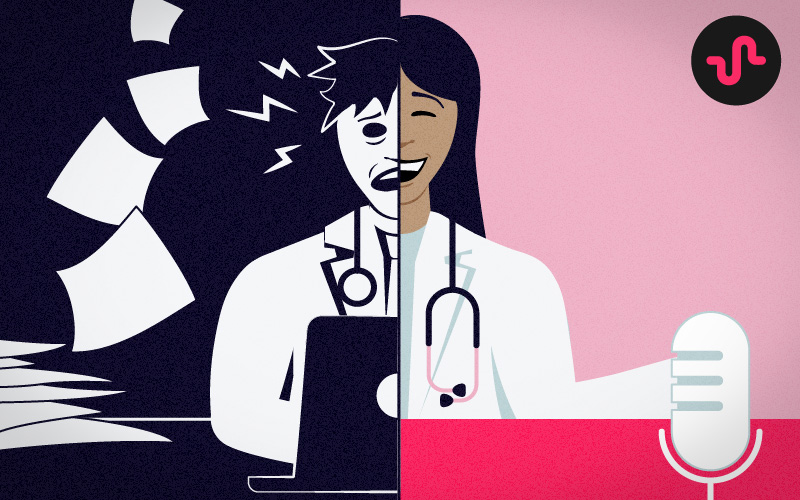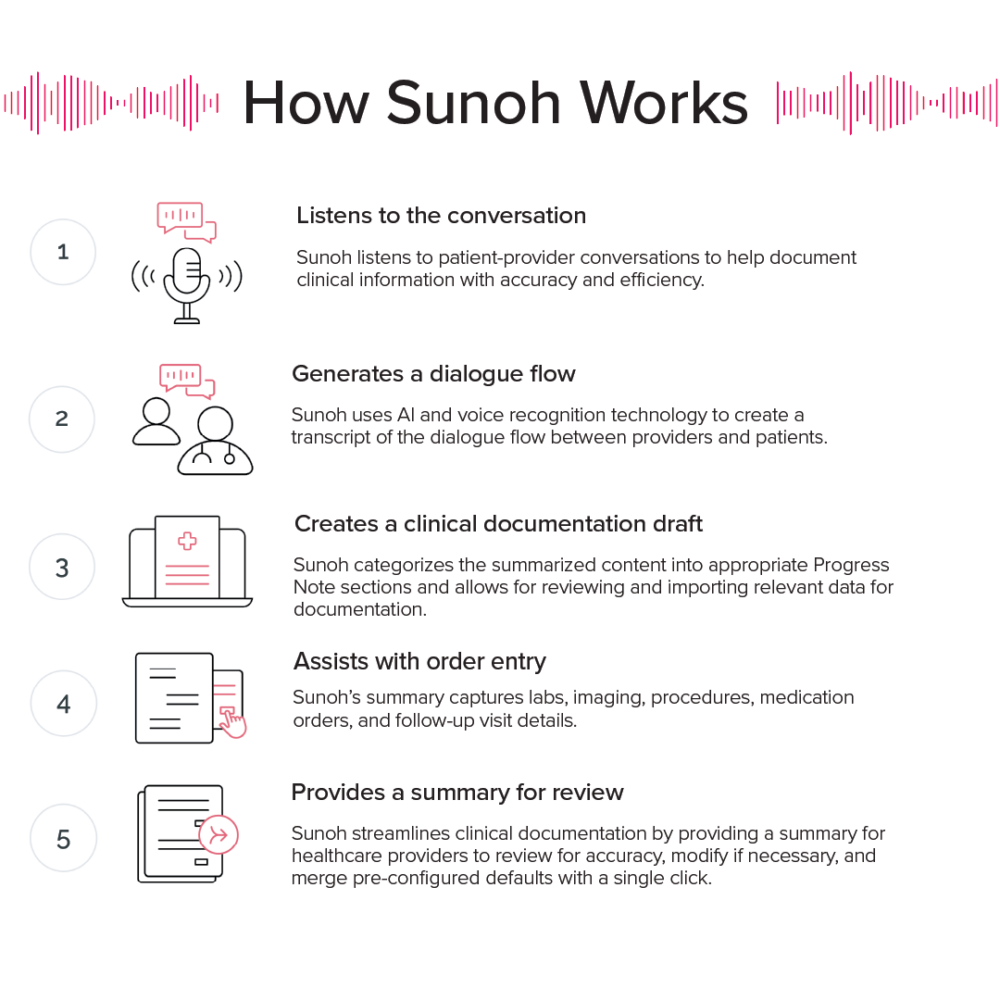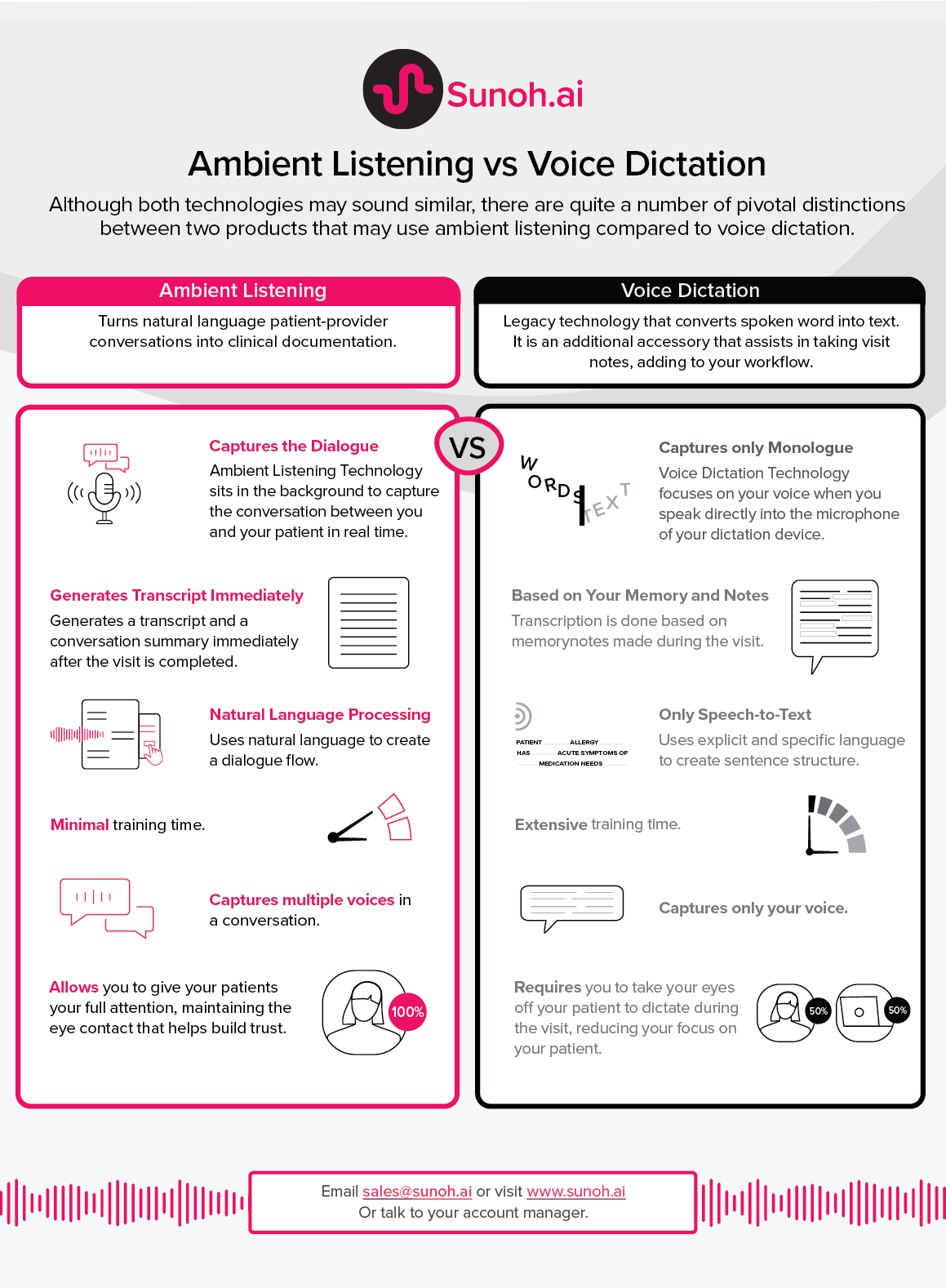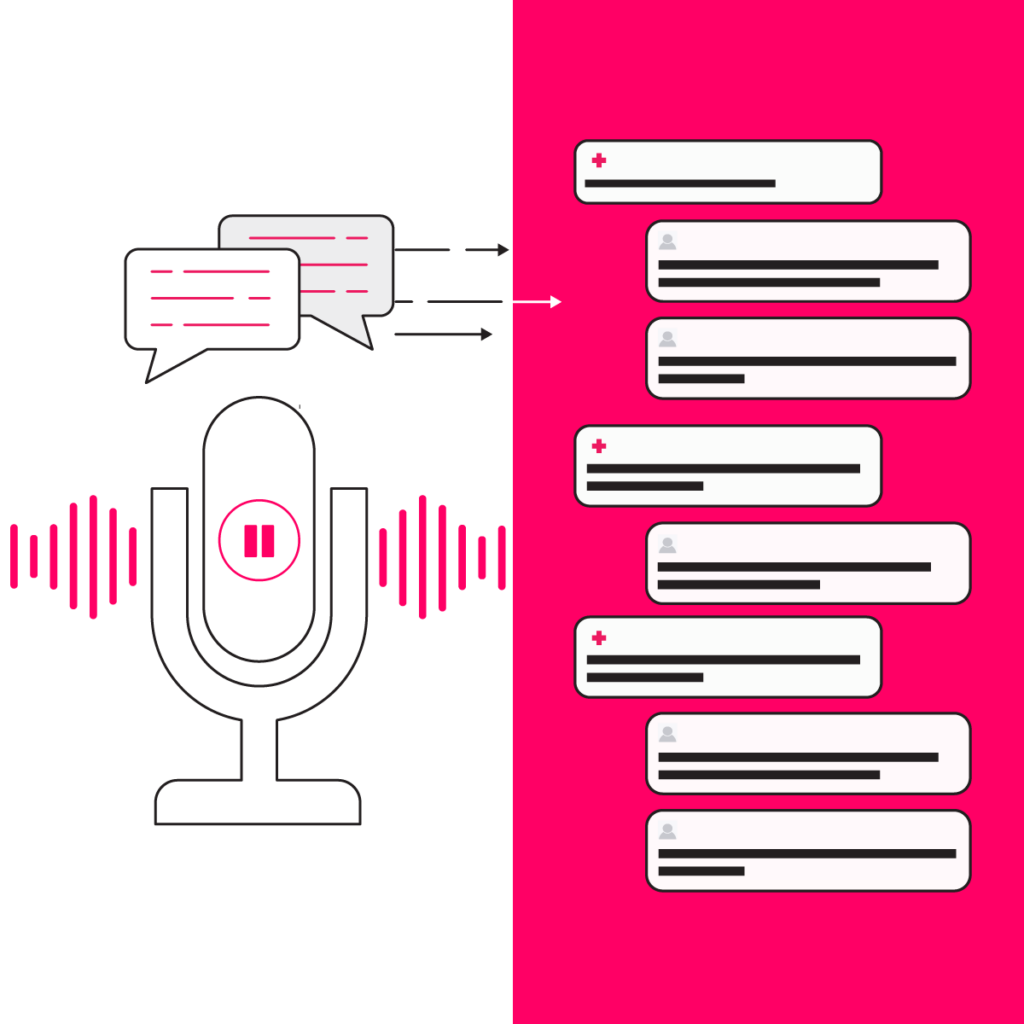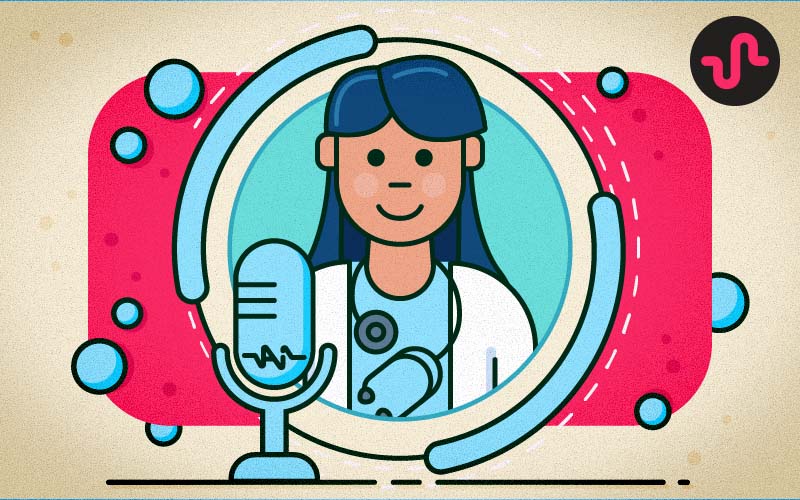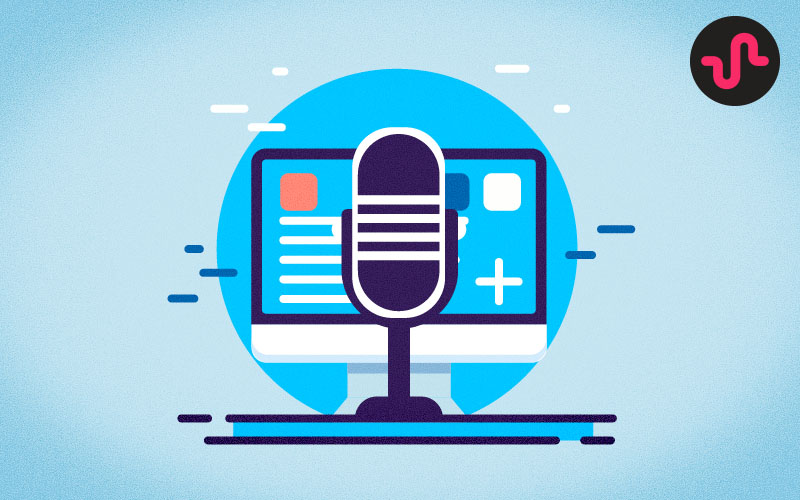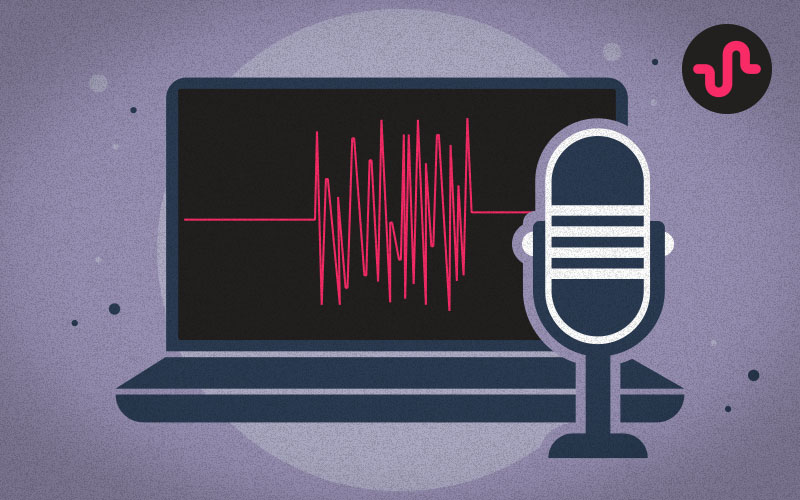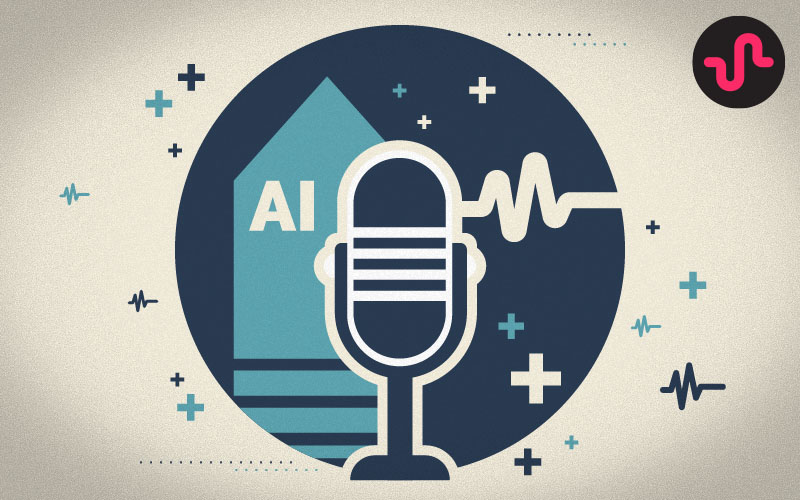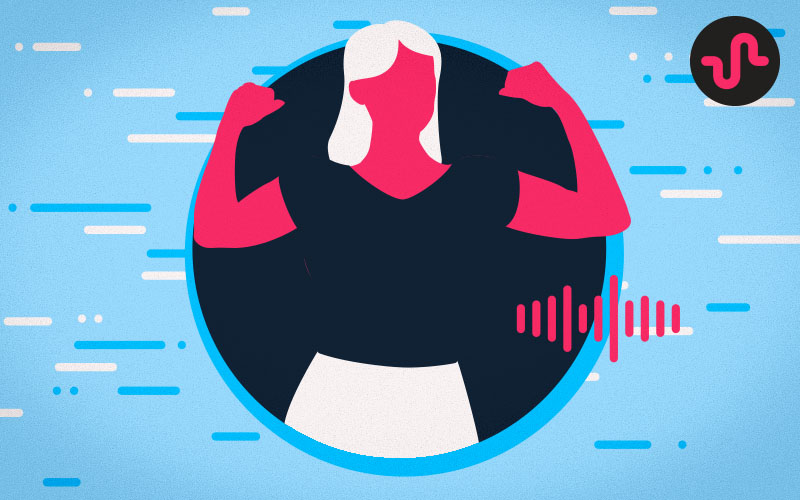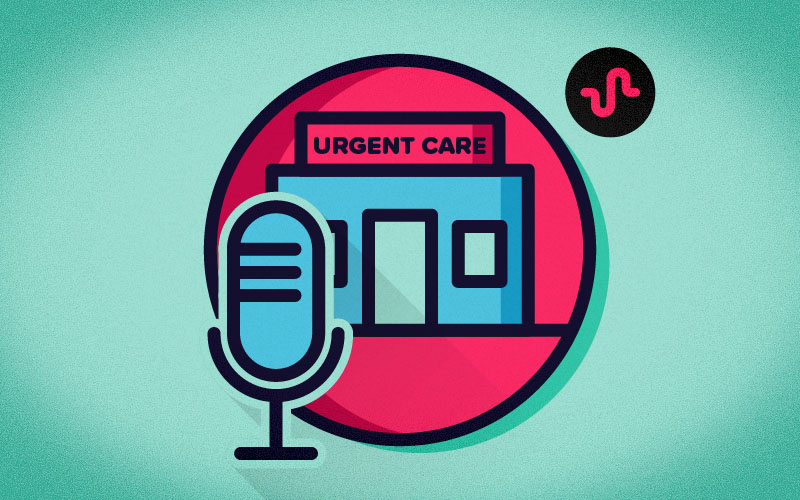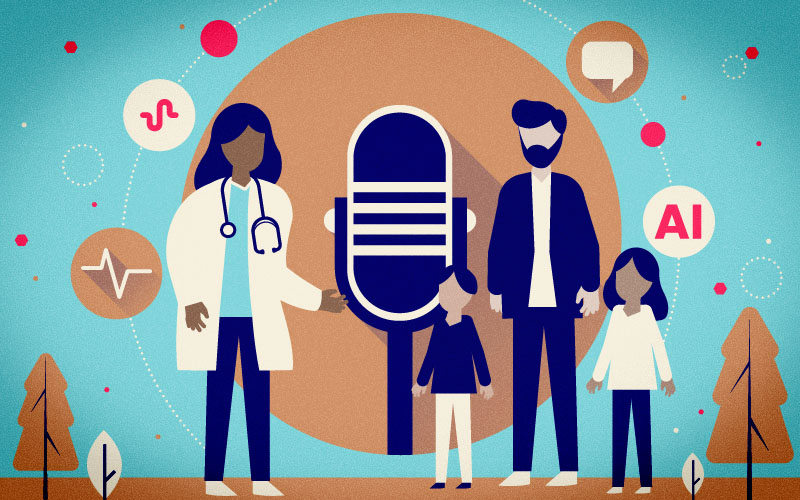What Medical Disciplines Use AI Dictation Software?
The flexible and robust design of a medical speech-recognition software solution such as Sunoh makes it suitable for primary care, urgent care, and many specialties, including dental, pediatrics, dermatology, rheumatology, and behavioral health.
Here are examples of Sunoh at work across the nation:
Broad applications for primary care practices
Primary Care Medical Partners (PCMP) offers behavioral health services, preventive medicine, and chronic disease management in El Paso, Texas, neighboring Ciudad Juárez, Mexico, Las Cruces, New Mexico, and surrounding areas.
Like many primary care practices, PCMP uses Sunoh to document patient visits, allowing providers converse with patients rather that staring at a computer. Sunoh captures details of the encounter, creating a transcript and draft Progress Note that the provider can review afterwards for clinical accuracy.
“By implementing these AI solutions, we aim to reduce physician burnout and improve patient interactions,” said Dr. Martha Y. Montanez of PCMP.
Useful for urgent care practices
At practices such as Oregon’s Canyonville Health and Urgent Care, Sunoh gives providers the in-office mobility they need.
“Embracing the seamless integration of Sunoh.ai with the eClinicalWorks EHR has been a game-changer for our practice,” said owner Anand Rao. “Our medical assistants have transitioned to focus more on front-office tasks as the AI medical scribe shoulders the burden of documentation. This allows our providers to interact more intimately with patients, using the eClinicalTouch® app on an iPad and freeing up precious time to dedicate to the patients.”
Canyonville’s providers can now review, edit, and approve Sunoh’s transcription summaries, allowing the practice to reallocate staff time and add chronic care management services.
Drilling down with dental
Community Health Alliance (CHA), a Federally Qualified Health Center (FQHC) with six locations in Reno and Sparks, Nevada, offers comprehensive medical services, including dental services. By using Sunoh, the practice can improve workflows, efficiency, and patient care.
“Previously, a dental assistant would sit with a hygienist while doing periodontal charting to enter that information in manually,” said Dr. Lisa Collier, chief dental officer. “Alternatively, without the dental assistant, the hygienist would document all the periocharts onto a piece of paper and then transfer that information into the system, which is very cumbersome. Ensuring we always have a dental assistant available for charting poses substantial staffing issues. We’re thrilled to use Sunoh.ai because it accelerates periochart documentation and captures detailed information. Now, we’re able to go through the exam with voice commands, which frees up our dental assistants to complete other important tasks.”
Reliable and effective for women’s health
Idaho’s Rocky Mountain Women’s Clinic, which offers comprehensive women’s health and medical aesthetic services, was struggling with time management and workloads.
“We selected Sunoh.ai after carefully evaluating several AI scribes and it has proven to be a game-changer for our practice,” said owner Kylee Johnson. “Since its implementation, Sunoh.ai helped us save at least two hours a day on clinical documentation. The reliability and cost-effectiveness compared to a traditional medical scribe, and its ability to provide detailed and fail-proof documentation, have truly impressed us.”
Rocky Mountain is also planning to use Sunoh in conjunction with telehealth to serve patients even more efficiently.
